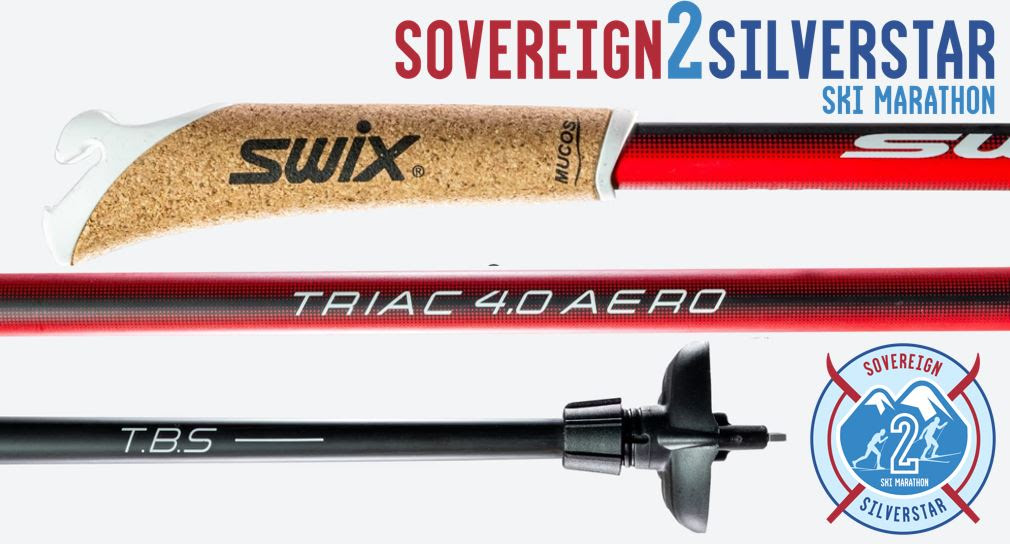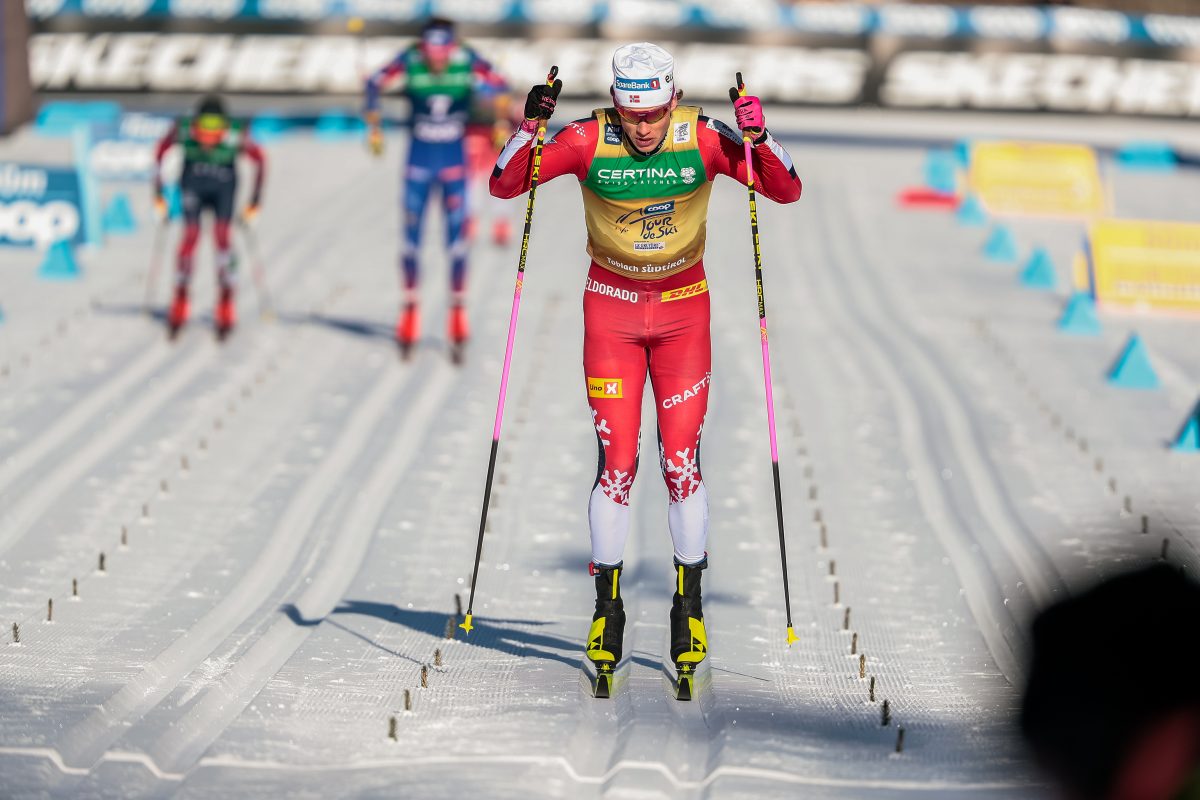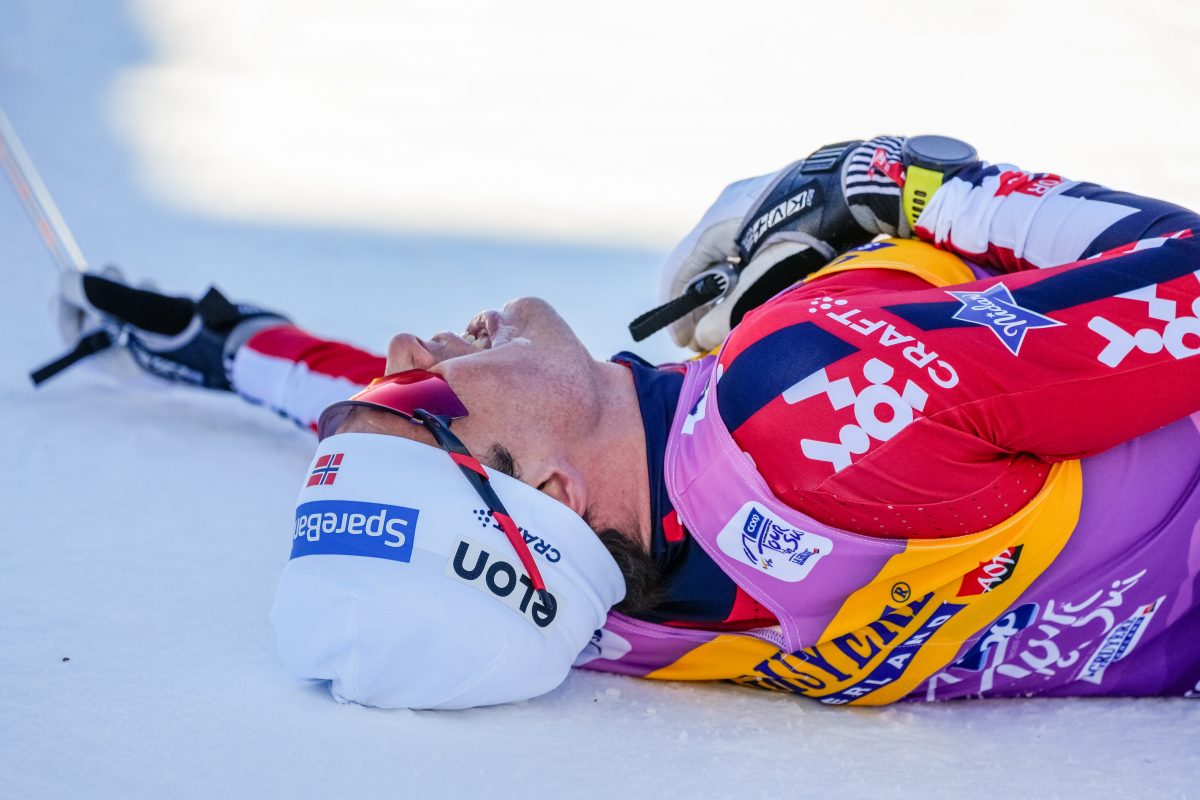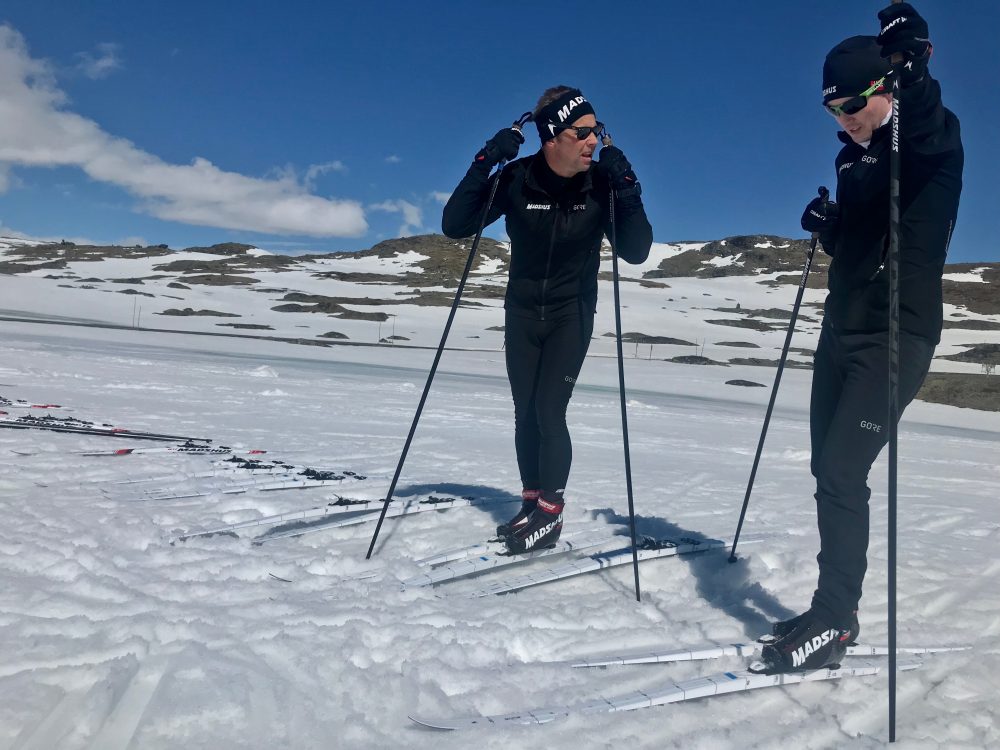
Twenty-three-years-old, a mechanical engineering degree from Harvard in hand, and a love for cross-country skiing. Lots of opportunity.
Connor Green, raised in Rochester, New York, deep into cross-country skiing, and a brain fixated on asking questions and solving problems through better engineering has brought his services to Biri. He is a product engineer with Madshus AS in Norway. Green was interviewed this past May. After hearing that Green worked for Madshus through a Caldwell Sport blog post, the obvious choice was to learn more about the American in Norway.
Green grew up ski racing for Rochester Nordic Racing and raced for Harvard’s cross-country ski and running programs. He graduated in 2018.
FasterSkier: How did you first incorporate your love of skiing with your engineering studies in college?
Conor Green:The first project which would have been applicable to skiing came sophomore year when I built a system for roller skis which measured the skier’s force output and provided real-time feedback. It was bare-bones prototype level stuff, but it could indicate whether you are providing a sharp, early kicking action or if you have late kick and it allowed me to visualize that force relationship while roller skiing.
So that would have been sophomore spring. But that project didn’t come from nothing. There were other classes freshman year and in high school which helped along the way. Growing up I was always tinkering, and over time all those skills bleed into each other and build up.
When I got to a project like the rollerskis, I already had the skills to be able to do that, and for the things I didn’t know I had the confidence that I could learn them quickly. That’s another important lesson with engineering; the skills are very transferrable and you’re often learning how to learn. A given project might not be relevant in someone’s career, but the skills and thought process behind figuring out a solution to the problem certainly will be.
FS: In many ways, for someone with your skill set and interests, you have landed the perfect job. Can you explain how you ended up working for Madshus?
CG: I had contacted my current boss, Bjørn Ivar Austrem, probably as early as my sophomore year to inquire whether or not they had any summer internship opportunities. I told him about my background and he always took the time to respond, but they never had any openings. And now I realize that is more a function of how businesses work in Norway. Most companies more or less shut down in July. Everyone takes three to four weeks of vacation in the summer so having a summer internship, where one of the three months would be spent on vacation, from a logistical standpoint doesn’t make sense.
That was a big part of why nothing opened up. But once I came to the end my time at Harvard and was trying to figure out where to go next, I wanted to find a place I would be happy, be that the US, Norway, or elsewhere in the world. I figured I am never going to have as much freedom to move wherever I want, I am never going to be as good at Norwegian as I was right then, so at that point I started looking for jobs in Norway and contacted Bjørn Ivar. The timing there seems to have worked out quite well.
FS: So what exactly is your role with the company?
CG: My specific title is product engineer, but that doesn’t really describe everything I’m doing on a day to day basis. Yes, I’m generally working on products, but I am also designing and building tools and software for the men and women on the production floor to be more efficient and to better understand the products we are making, for quality control, sorting skis, pairing skis, whatever helps the company. I think a better description of my job might be providing Madshus with competitive technical advantages. I get to work with the race team developing skis to provide our athletes with a competitive advantage, but I also get to work with the production workers building tools to provide them a competitive advantage compared to our rivals. On a day-to-day basis I’m trying to apply technical knowledge and skills such that Madshus products and processes are improved.
It is not a super big company, so I get to wear a lot of hats which is a lot of fun for me. I’m certainly not doing the same thing every day.
FS: From an engineering perspective, can you speak a bit about building skis at Madshus?
CG: So my belief and feeling is that the replicability of skis from Madshus is state of the art. All the materials we are using are extremely standardized. We are using engineering grade foams, we are using standardized fibers, carbon, glass, plastic materials. It is all very controllable. We use very little of what I might call variable raw materials.
So be it wood in their core and sidewalls, be it cellulose based materials, or other highly variable raw materials, purely from controlling what goes in it is a lot harder for some other manufacturers to do that. If there’s more variability on the input, you’re naturally going to have larger variation in what comes out.
For me, when I make X, Y, and Z changes to a ski, and then test it — I know those changes come from X, Y, and Z, and not some random variation in the process.
FS: Here in the U.S., many skiers rely on a ski-picker to find that magic pair of skis at the factory. In a controlled environment like Madshus, what is the role of a ski picker?
CG: My understanding is that at a company like Madshus the role of ski picker is not so much sorting dud skis from good skis, it’s more about fitting the desired ski qualities to skiers. Every series of skis we are trying different things. Because there are so many different snow conditions, so many variables, so many different weights of skiers and there are so many different techniques of skiers … being able to find one ski to rule them all for everybody in all conditions is not a super realistic goal.
We can work towards it for sure, and skis which are made as general stock for ski shops are made with more “universal” cambers than what we do for our race room. There is always going to be some degree of variation needed at the top end of racing and this is where ski pickers come in. From one series to the next, we have a slightly different goal for the camber, for what those skis should be. We might try moving the highpoint relative to the balance point, we might try adjusting the pressure zones, any number of changes in the camber can be made which all influence the skis produced in that series. Changing the camber changes how the ski’s properties are expressed on snow, and this is something we have very exacting control over and can more or less pick and choose what we want based on our current ski theory and goals of the series of skis. But, at the same time, you need something that works on snow. And that is where the role of the ski picker comes in—using experience and intuition to best match the camber of groups of skis to skiers based on their individual needs.
FS: I think Madshus is highly mechanized and has the ability to produce one off skis to test. If you have an idea, is it fairly easy for you to prototype that ski?
CG: One hundred percent. If I have an idea I can make and test that ski in a very short time period. I think this flexibility is one thing that is amazing about Madshus. It’s possible to have an idea showering in the morning, come into work and make the ski, and then have it testing after work.
It’s definitely more mechanized here than many other factories, but there’ll always be a human element. For example, something like setting the camber. That is something which would be very difficult to fully automate, even with AI and where that progresses in the coming years, there will likely always be a human at the end making decisions. But in general yes, our factory is highly mechanized and our factory workers are therefore very skilled.
I cannot speak too much about specific processes as that’s proprietary, but depending on what I’m looking to change I can make a pair of prototype skis in as little as a few hours. However, something like changing the thickness profile of the ski requires new molds and therefore has a much longer lead time. I’ve tried to focus most of my efforts on things which I can prototype and test quickly, and this process has allowed me to learn a lot in a short period of time.
FS: It is easy to get the impression here in the U.S. that producing good skis and acquiring those skis involves a bit of luck and magic. Dispel the myth for us.
CG: My impression had always been that in North America, and I think in Europe as well, that the ski industry has this magic about it and everything is super-secret and everyone is trying to copy each other or replicate a special pair of gold medal skis from 1998 or whatever.
You know, they find one pair of skis that worked or won a race for an athlete and they have been trying to replicate it ever since. There is so much of this mystique associated with ski production and it is not necessarily the case.
Skis are great objects to study for a lot of different reasons because they are simultaneously so complex and yet so simple. At the simplest stage you have two pressure zones and a supported span in the middle and everything that is happening in between that can be calculated from basic theory, it’s very by the book. You learn it your first year in engineering school. But skis are also used dynamically and dynamic effects are more difficult to describe in one or two equations. On top of this skis are all made of composite materials which further pushes skis from simple theory to hand-waving art. Humans have been making things with metals and wood for thousands of years, we’ve gotten pretty good at it, but manufacturing with carbon fiber has only existed for the last 50 to 100 years and as a result there’s still a lot we’re figuring out. As a field our of understanding composites are rapidly progressing. The general point is that skis are cutting edge in one way and very basic in another, but critical thinking and an understanding of physics will get you very far, while practical testing in the lab and on snow can fill in the gaps.
This is the biggest myth that I would dispel: the idea that skis are an un-understandable thing and that inquisitive and curious people should not bother trying to learn about them. I often talk with people and they say something to the effect ‘I wonder what would happen if I did ___ in a ski?’ and they say it off the cuff, assuming the answer is never going to be known. But really, these are often questions grounded in good thinking and lead to promising prototypes. At the very least I can come up with some theories as to why what the predominant effect would be and make my best guess.
In summation: skis are not magic.
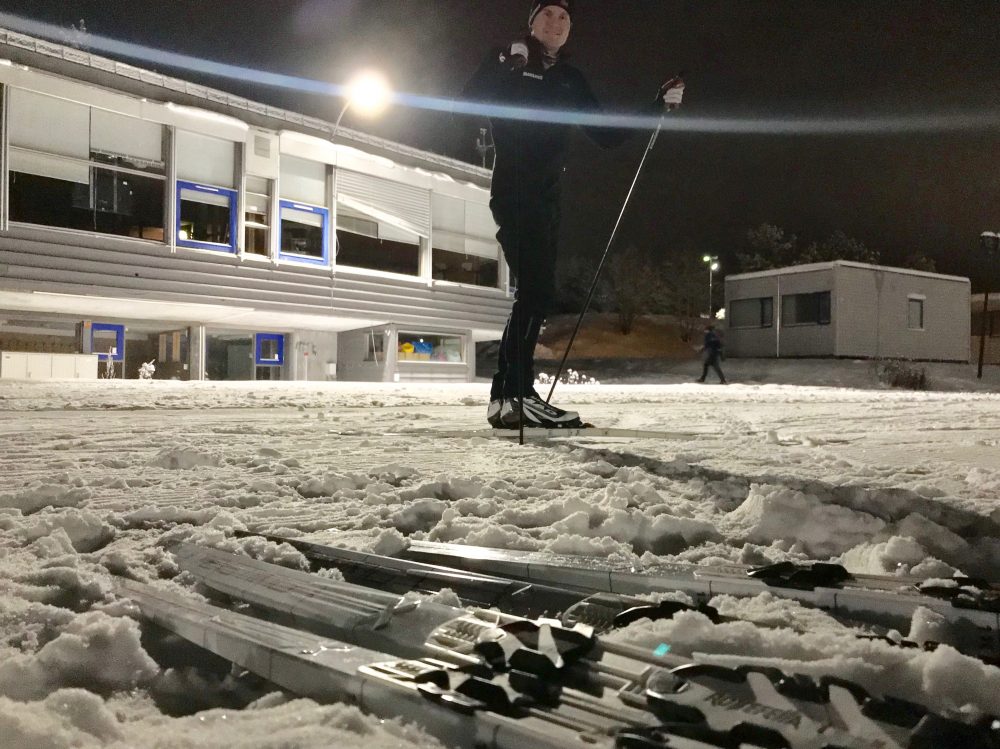
FS: Can you speak more directly to the variability in skis and how that plays out at the elite level?
CG:I think one thing that convolutes the whole discussion of “good skis” is the variability of snow and skiers. Some days the ski selection is everything right? If you think about breaking down skis on race day into three groups you have wax, you have structure, and you have ski choice. Some days it does not matter what ski you choose if you have the right structure and wax. Other days ski choice is everything. The specifics about why that ski choice was everything is a further variable I need to try and understand. This is definitely something that need to keep in mind whenever I am looking at racer data or getting feedback on skis from particular races.
Think about say, skier A is super unhappy with their skis they were slow and losing time the whole race. Then I either watch the race or look at other results for the race. I ask where were the rest of their teammates who had the same wax? How did they do? If they all had bad races it is probably not the skis. Or it’s at least a lower probability that it is the skis.
We need to ask deeper questions other than was this ski was awesome? Was this ski garbage? This is something racing tends to do anyways. It tends to polarize results, especially with so many people involved from wax techs to the athlete themselves.
We usually get qualitative results from the athlete or wax tech. We find out whether they are generally pleased with their skis to get a read on that. Because obviously if you have athletes that are always disappointed with their skis you need to get them new material and find something they’re happier with.
One thing which is an enormous help for me now is the EmPower system. Every single ski we make in the factory has its camber curves measured and saved in our database, so when an athlete repeatedly prefers certain skis in races I can search the serial number and use the data to start finding out why they like that ski and understand trends over a wider dataset. Using both big data and small data is useful in guiding decisions, and both are important in their own ways. This is yet another area which sets Madshus apart from other manufacturers and helps me to be more effective and make more informed decisions while doing my job.
FS: Lastly, to break into the ski industry in Europe, what is your advice?
CG: My first recommendation is to learn the language of the place you are going. For the ski industry or any other, learning the language of the country you’re moving to before moving will make the whole transition easier. Fluency isn’t necessarily required, but make sure you’re comfortable enough that you don’t immediately need to default to English. If you can do that then you’ll learn the language very quickly just by living your life. Besides that, placing a priority on education will provide a leg up and help you bring something more than just a background in skiing to the ski company.
Jason Albert
Jason lives in Bend, Ore., and can often be seen chasing his two boys around town. He’s a self-proclaimed audio geek. That all started back in the early 1990s when he convinced a naive public radio editor he should report a story from Alaska’s, Ruth Gorge. Now, Jason’s common companion is his field-recording gear.

